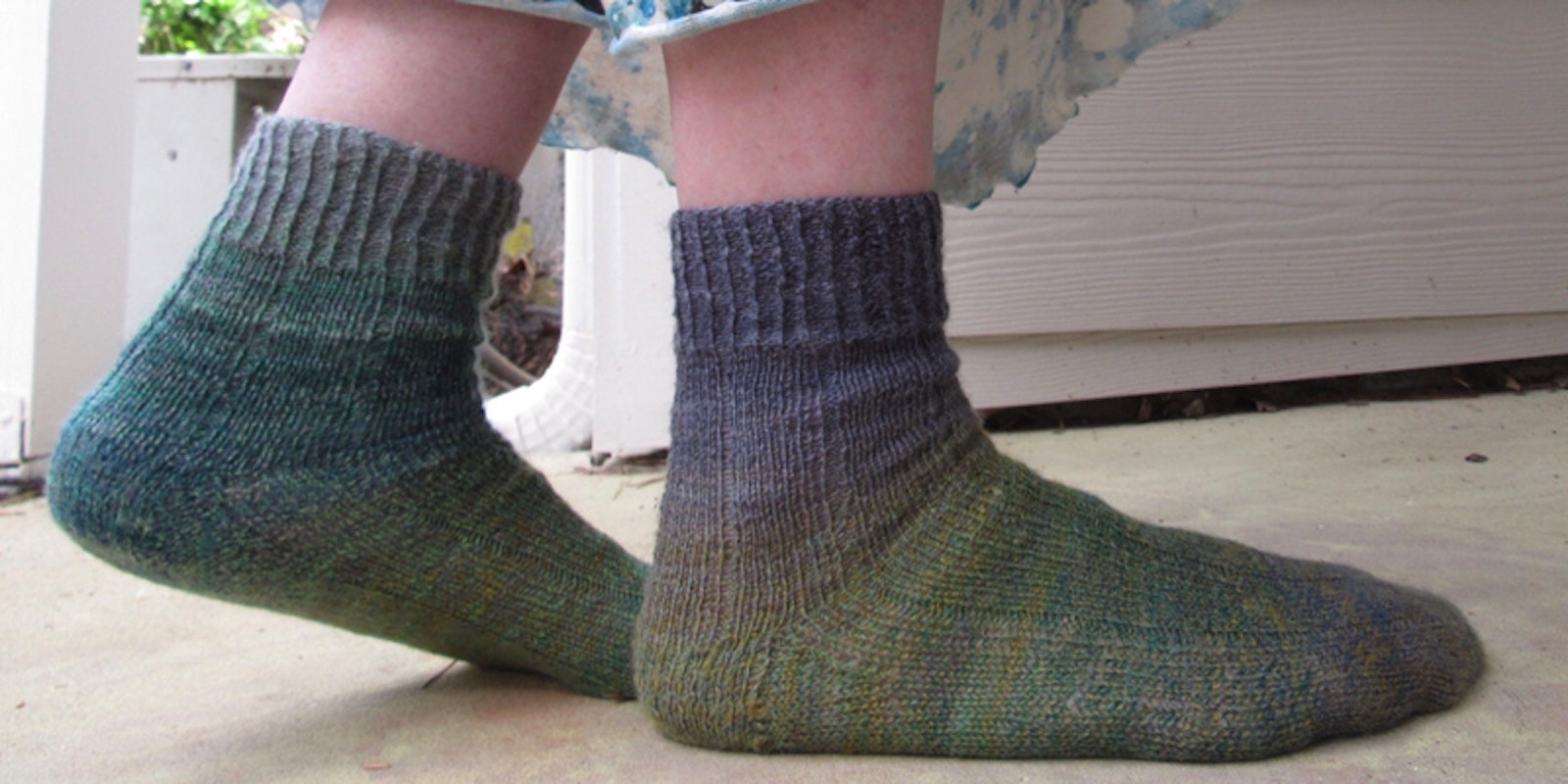This week I finished my handspun socks, which I knitted for Spin Off’s Second Annual Spin and Knitalong. Although these were not my first handspun socks, this is the first pair I get to keep for myself. As usual, I learned a thing or three from knitting with my own handspun—a fractally-divided, traditional 3-ply, suspended-spindle-spun Corriedale—on this go-round.
My fractal-spun 3-ply, ready to become socks.
1. Be prepared to do a gauge swatch
...or be okay with ripping out your cuff a time or two until you get the right match of needle to yarn. By its nature, handspun yarn is made up of variables, so unless you only spin one kind of fiber and always use the same preparation and drafting technique (and wheel ratios) when spinning, expect the (somewhat) unexpected. My knitted handspun usually takes up more fabric per square inch than commercial yarns of the same grist, and many spinners share that experience since handspun, can just be denser than millspun yarn. Be patient and ready to try a couple of needle sizes until you find the result that pleases you.
Knit a gauge swatch—or your first sock will become your gauge swatch.
2. Every stitch really does matter when knitting to fit—all the more so when knitting across relatively few stitches to begin with.
Make sure to check your stitch count frequently. Had I done so, I would not have needed to re-knit the entire foot and toe of my first sock—already closed with ends woven in—twice. A bit of ribbing can also make up for potential fit issues. The more ribbing included, the more elasticity your fabric will exhibit.
3. Using handspun presents an ideal opportunity to design a “just for you” sock from the ground up.
This is the best part of handspinning, isn’t it? As spinners, we can choose the wool or fiber content, the optimal yarn durability, and even the end appearance of the finished fabric of our knitted piece, all before the knitting even occurs. Marled? Stiped? Solid? Heathered? Your choice can be accounted for in the spinning stages. Even though I’d spun an entirely different yarn for the SAL/KAL initially, in the end that yarn just didn’t wow me, so I went with a handspun yarn that had been begging to be cast on. This light fingering weight yarn was spun worsted on my favorite spindles and then 3-plied on a wheel. I figured that with the right gauge I could still get a pair (or two) of perfectly durable, breathable, summer-weight socks—something I’d been meaning to knit.
The occasional purl stitch adds up to a bit of flexibility, and a 2” cuff is perfect for summer.
In keeping with my lightweight theme, I knitted the cuffs and leg to just at 4 inches above the heel. I prefer the feel of a sock with negative ease, but I was trying to avoid what happened with my Targhee socks, so I added in the slightest bit of ribbing (7x1) with a 56-stitch cast on. I’m smitten with the 2-inch cuff and 2-inch leg combo and can see this sock rendition becoming a staple in my wardrobe.
Iggy pronounces these socks juuuuuust right.
I absolutely adore the feel of the Corriedale against my feet. It’s neither soft nor scratchy. It’s what wool feels like in the imagination (or at least mine), and most certainly would be deemed “juuuust right” by Goldilocks herself.
I so enjoyed this year’s knit and spinalong. There is nothing quite like an encouraging community to help keep a knitter and spinner motivated. Watching Ravelry group members of all experience levels compete their own beautiful pairs of handspun socks definitely helped me to finish mine—and I am so glad I did!
—Debbie Held
Featured Image: Goldilocks socks! Photos by Deborah Held





